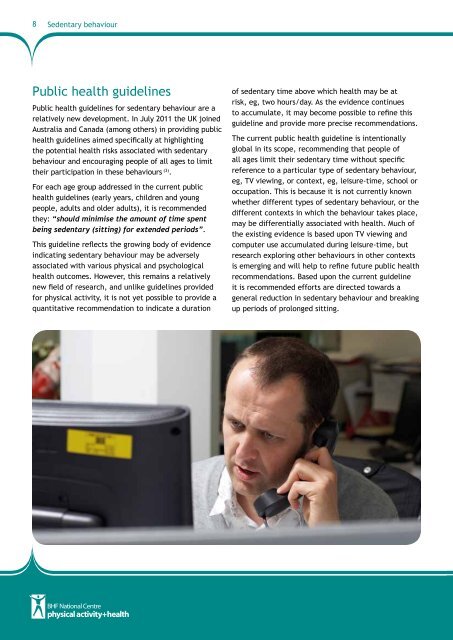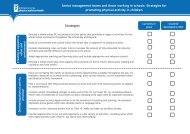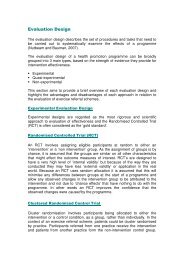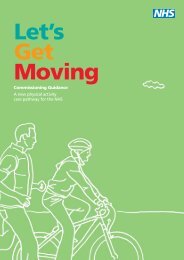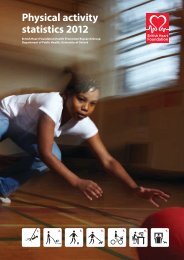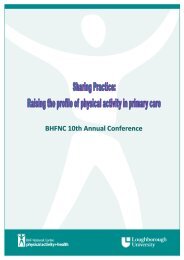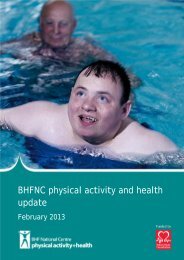Sedentary behaviour evidence briefing - BHF National Centre ...
Sedentary behaviour evidence briefing - BHF National Centre ...
Sedentary behaviour evidence briefing - BHF National Centre ...
You also want an ePaper? Increase the reach of your titles
YUMPU automatically turns print PDFs into web optimized ePapers that Google loves.
8<br />
<strong>Sedentary</strong> <strong>behaviour</strong><br />
Public health guidelines<br />
Public health guidelines for sedentary <strong>behaviour</strong> are a<br />
relatively new development. In July 2011 the UK joined<br />
Australia and Canada (among others) in providing public<br />
health guidelines aimed specifically at highlighting<br />
the potential health risks associated with sedentary<br />
<strong>behaviour</strong> and encouraging people of all ages to limit<br />
their participation in these <strong>behaviour</strong>s (3) .<br />
For each age group addressed in the current public<br />
health guidelines (early years, children and young<br />
people, adults and older adults), it is recommended<br />
they: “should minimise the amount of time spent<br />
being sedentary (sitting) for extended periods”.<br />
This guideline reflects the growing body of <strong>evidence</strong><br />
indicating sedentary <strong>behaviour</strong> may be adversely<br />
associated with various physical and psychological<br />
health outcomes. However, this remains a relatively<br />
new field of research, and unlike guidelines provided<br />
for physical activity, it is not yet possible to provide a<br />
quantitative recommendation to indicate a duration<br />
of sedentary time above which health may be at<br />
risk, eg, two hours/day. As the <strong>evidence</strong> continues<br />
to accumulate, it may become possible to refine this<br />
guideline and provide more precise recommendations.<br />
The current public health guideline is intentionally<br />
global in its scope, recommending that people of<br />
all ages limit their sedentary time without specific<br />
reference to a particular type of sedentary <strong>behaviour</strong>,<br />
eg, TV viewing, or context, eg, leisure-time, school or<br />
occupation. This is because it is not currently known<br />
whether different types of sedentary <strong>behaviour</strong>, or the<br />
different contexts in which the <strong>behaviour</strong> takes place,<br />
may be differentially associated with health. Much of<br />
the existing <strong>evidence</strong> is based upon TV viewing and<br />
computer use accumulated during leisure-time, but<br />
research exploring other <strong>behaviour</strong>s in other contexts<br />
is emerging and will help to refine future public health<br />
recommendations. Based upon the current guideline<br />
it is recommended efforts are directed towards a<br />
general reduction in sedentary <strong>behaviour</strong> and breaking<br />
up periods of prolonged sitting.


